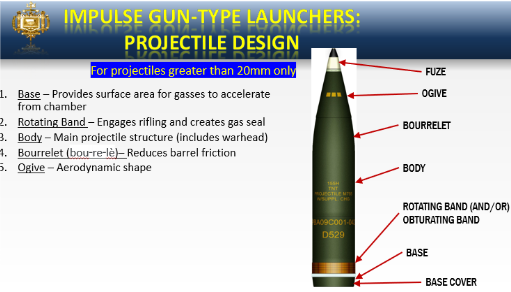Lesson 25 - Launchers/Guns
1/15
There's no tags or description
Looks like no tags are added yet.
Name | Mastery | Learn | Test | Matching | Spaced |
|---|
No study sessions yet.
16 Terms
What are the factors in the fire control problem?
Continuously measure present target position
Effects of relative motion
Effects of interior and exterior ballistics
What are examples of launchers?
Person throwing grenade
Rifle firing a bullet
Missile launched from rail
Torpedo launched from tube
How does a weapon launch?
Gravity: released and falls from launcher
Reaction: weapon provides own thrust to separate from launcher
Impulse: weapon pushed away from launcher using ejector or gun type
Reaction launcher
Thrust to separate weapon from launcher is created by the weapon itself
Separated into: canister and rail launchers
What are reaction launchers separated into?
Canister and rail launchers
Rail launchers
Make use of rails, tubes, long ramps and tall vertical towers to constrain a weapon system while it begins flight providing considerable flight control (ex: sea sparrow)
Impulse launcher: ejector type
Compressed gas, mechanical force, or EM force used to push weapon away from launcher
Impulse launcher: gun-type
Use a propellant to generate high pressure at a controlled rate to push a projectile away from a launcher

Gun-type launchers projectile design
What determines pressure in an impulse gun-type launcher?
Propellant mass and burn rate
For a small barrel, do you want degressive or progressive burn?
Degressive (FAST) – high pressure early
For a long barrel, do you want degressive or progressive burn?
Progressive (SLOW) – high pressure later
What factors affect muzzle velocity?
Projectile weight, erosion, barrel length, temperature
Recoilless launchers
Propellant gases discharged rearward recoilless
Muzzle break
Reduce the forces of recoil by attaching baffling to the muzzle
Momentum of redirected gas offsets SOME of recoil momentum
What does barrel rifling cause?
Projectile to spin as it travels down barrel → aerodynamic stability